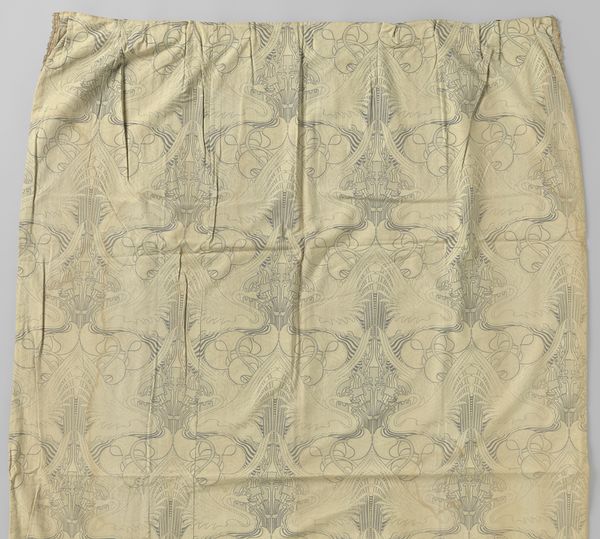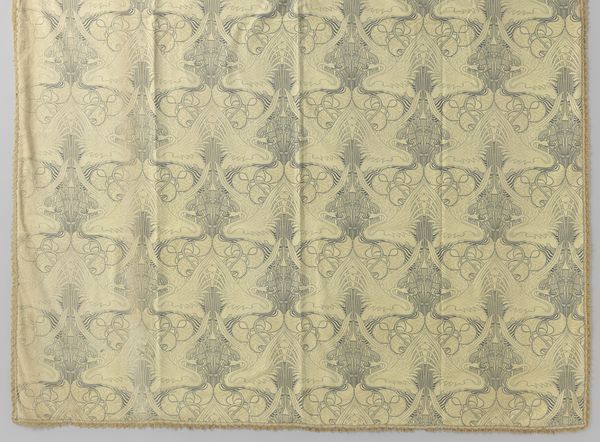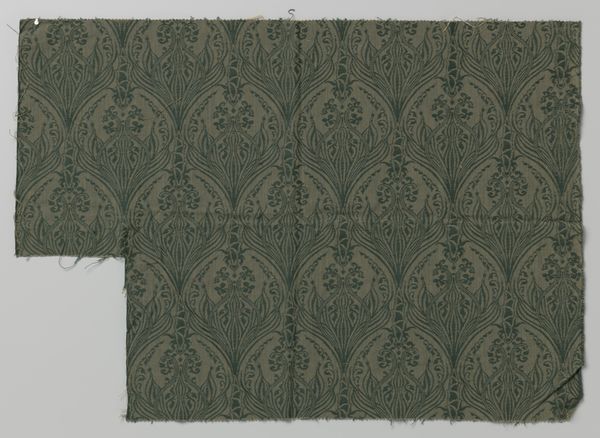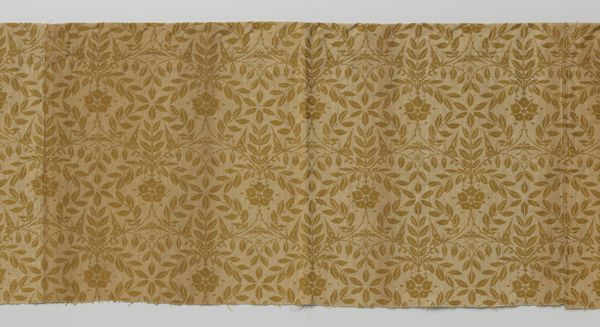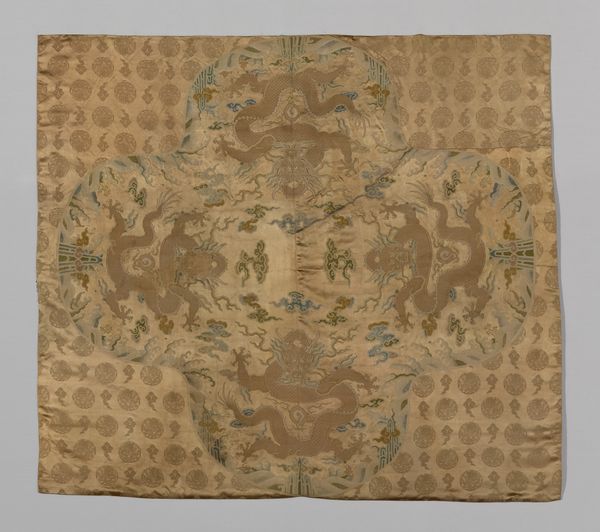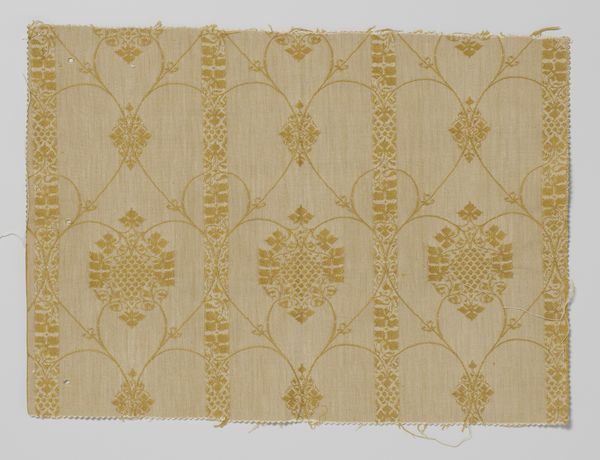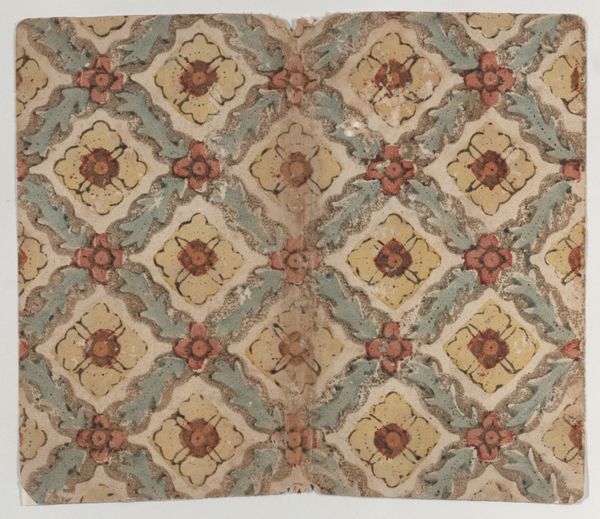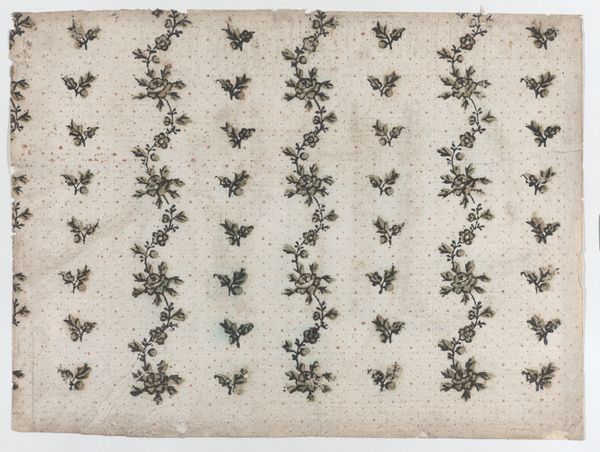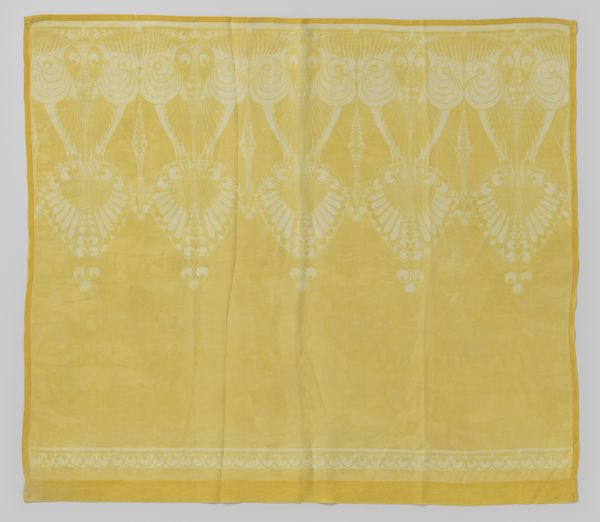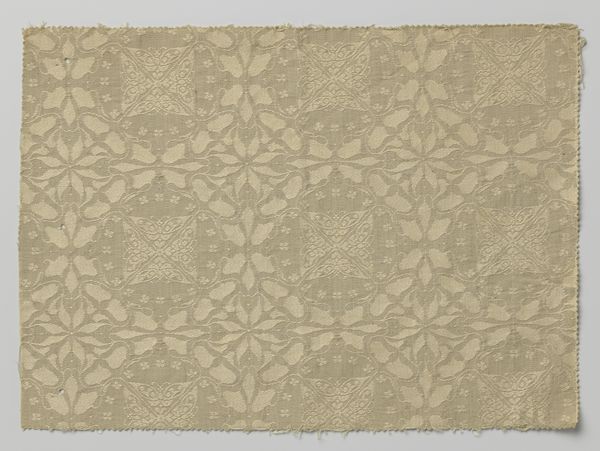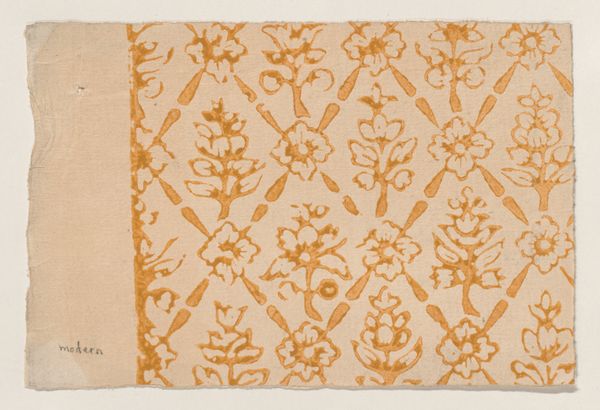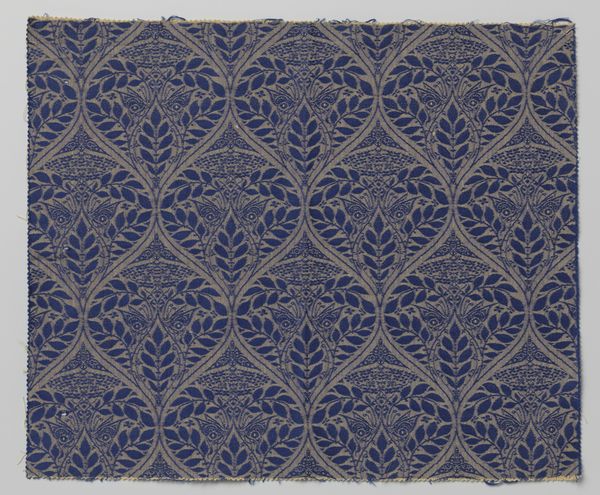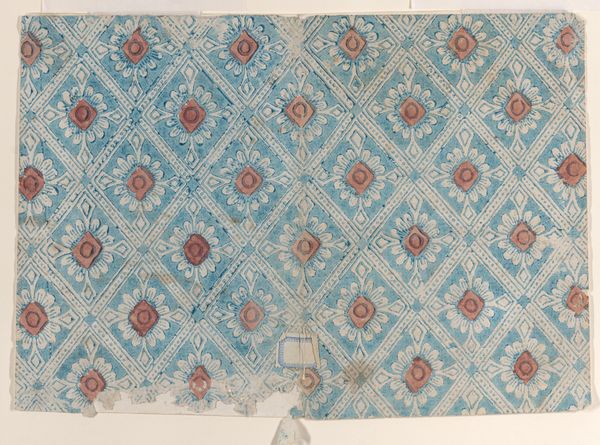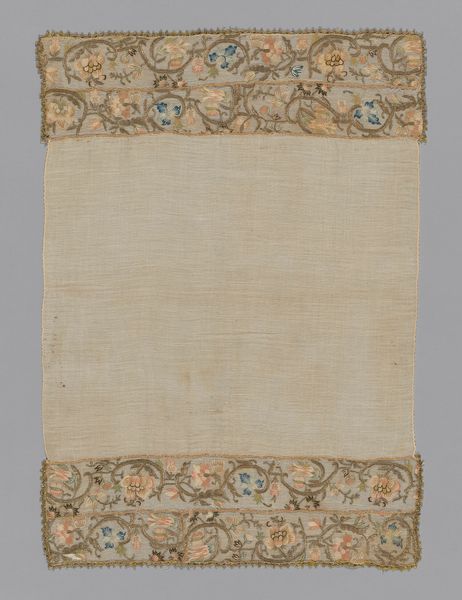
Fragment van een overgordijn van bedrukte cretonne met zwanen en lissen c. 1900
0:00
0:00
michielducocrop
Rijksmuseum
textile
#
art-nouveau
#
textile
#
fashion and textile design
#
fabric design
#
textile design
#
decorative-art
#
imprinted textile
Dimensions: height 105.0 cm, width 149.0 cm
Copyright: Rijks Museum: Open Domain
Curator: This is a fragment of a curtain, a “Fragment van een overgordijn van bedrukte cretonne met zwanen en lissen,” dating from around 1900. It resides here at the Rijksmuseum. It’s a gorgeous example of printed cretonne, showcasing both swans and irises. Editor: Wow, that takes me back. It's so…gentle. The repeated swan motif gives it this serene, almost hypnotic quality. Makes me think of hushed rooms and long, languid afternoons. It's kind of faded, but in a charming, vintage postcard way. Curator: Absolutely. This fragment is very indicative of the Art Nouveau movement. It features the era’s characteristic embrace of flowing lines and organic motifs. The swan and iris, themselves potent symbols, feed into the aesthetic preoccupation with nature, but also with concepts of femininity. Think about it in the broader context of shifting gender roles at the turn of the century, how decorative arts allowed for an interesting dialogue between the domestic and the public spheres. Editor: Ooh, I dig that. It does feel like there's a lot more to it than just pretty birds and flowers. Those swans are pretty stylized; almost heraldic, in a way. Do you think that's deliberate? Curator: Absolutely. The Art Nouveau style frequently merged stylized natural forms with a desire for a thoroughly modern aesthetic. This textile could be interpreted through the lens of gender and class dynamics of the time. In what ways does it conform to, or subvert, societal expectations? Considering how these fabrics would have adorned domestic spaces provides critical insights into the roles women held both publicly and privately. Editor: So, beyond just looking beautiful, it was actually kinda subversive in its own right. This makes you wonder how such fabrics shaped perceptions around identity and social dynamics. Curator: Exactly. The fabric becomes not just an object of beauty, but also a historical artifact through which we examine cultural assumptions, aesthetic innovations, and evolving ideas around decorum. It embodies cultural moments and acts as an interesting reflection piece for us. Editor: Well, now I can't just see it as some lovely, faded bit of cloth. I see stories, subtle defiance and even silent expression through everyday life and functional objects. Thanks for ruining it— I mean, making it way more interesting.
Comments
No comments
Be the first to comment and join the conversation on the ultimate creative platform.
